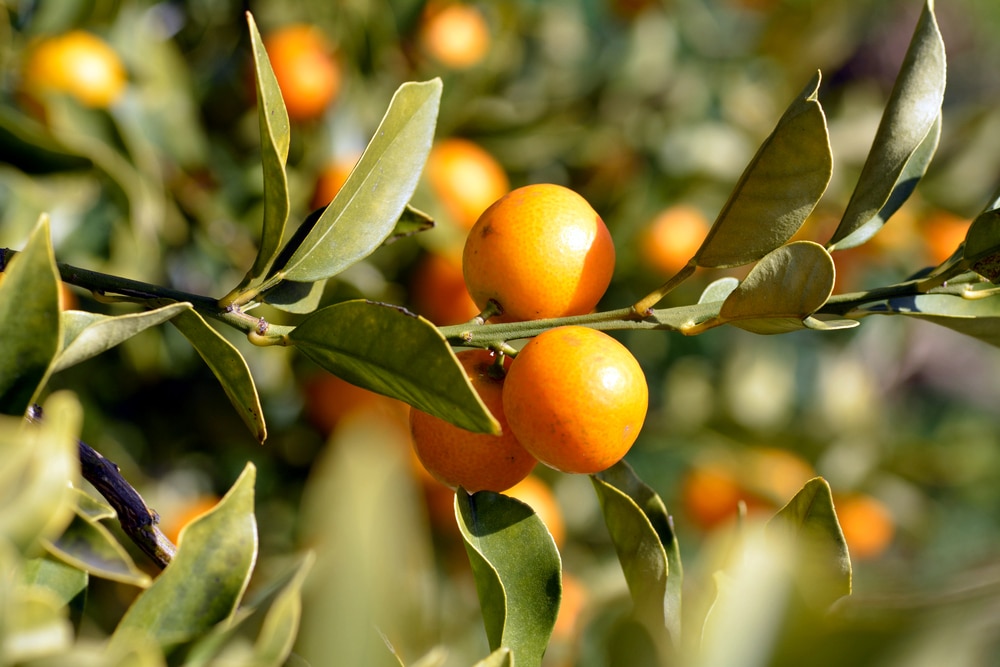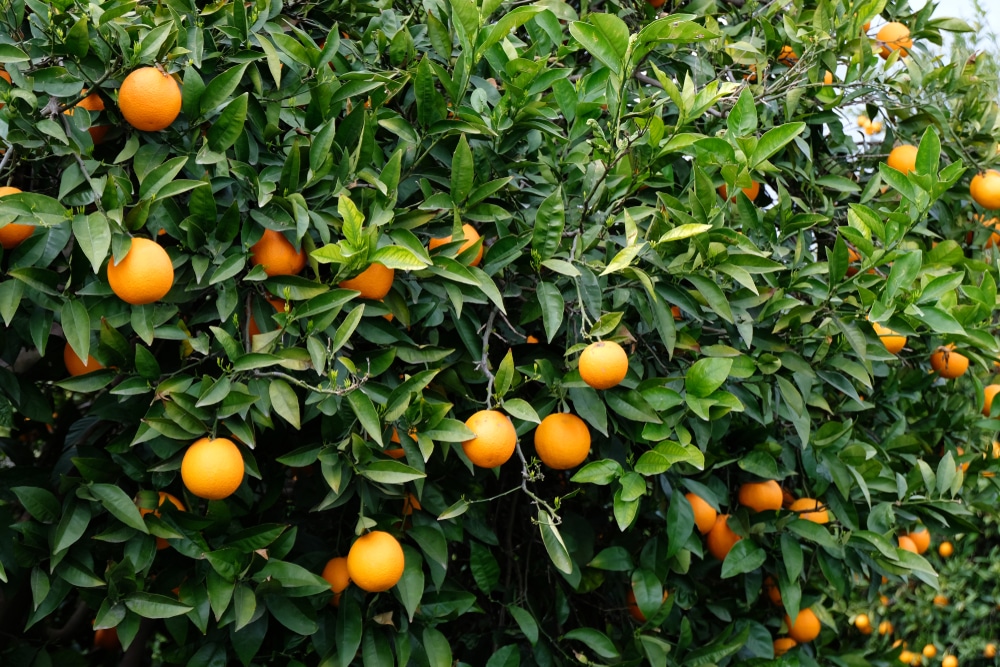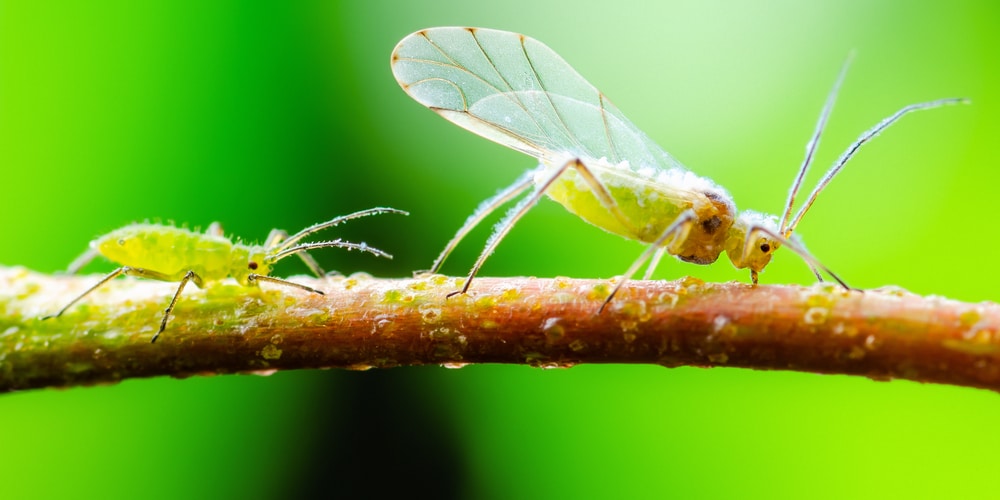Chlorosis. The bane of any orange grower’s existence. If your orange trees have suddenly developed yellow leaves, don’t panic! In this article, we’ll go over some of the most common reasons why chlorosis occurs in orange trees and what you can do to fix it.
What is chlorosis?
Chlorosis is a condition in which leaves turn yellow due to a lack of chlorophyll. Chlorophyll is what gives plants their green color and is essential for photosynthesis, the process by which plants convert sunlight into energy.
When leaves are yellow, it means they are not able to produce enough chlorophyll. This can be due to a number of reasons, including nutrient deficiencies, pests, and diseases.
Reasons why orange tree leaves turn yellow
There are a few reasons why your orange tree’s leaves might be turning yellow.
The most common ones are overwatering, nutrient deficiency, excessive use of organic manure, disease, and pests.
When the leaves of your orange trees become discolored, this causes improper water and mineral absorption, as well as impaired transportation of any of the water and minerals that get absorbed by the plant.
So, what are the main reasons for the yellowing of leaves in orange plants?
1. Overwatering
One of the most common reasons for chlorosis in orange trees is overwatering. Orange trees do best in well-drained, moist soils. Overwatering them is a recipe for disaster, as it not only causes leaching of crucial nutrients but can also encourage root rot.
When the roots of orange trees are constantly soaking in water, they begin to suffocate and rot. This leads to a decreased ability to absorb nutrients and minerals, which causes the leaves to turn yellow.
Besides, when the nutrients are washed away below the root level of the plant, nutrient deficiency occurs, and the leaves of the orange tree turn yellow. Thankfully, this is a temporary effect, and the leaves will return to their green color once the roots have had a chance to dry out and recover.
2. Nutrient deficiency
The second-most-common reason for chlorosis in orange trees is nutrient deficiency. Your orange trees need iron, zinc, nitrogen, and manganese to be able to produce chlorophyll. If they are deficient in any of these nutrients, the leaves will begin to turn yellow.
The most frequent nutrient deficiency that leads to chlorosis is iron deficiency. This mainly occurs in soils that have high pH levels (above 7.0), and have a high phosphorous and lime content.
In such conditions, iron will solidify and hence become unavailable for absorption by orange trees. Plus, the solid iron forms a plastic-like layer that contributes a lot to water logging and reduced aeration. Since iron is an immobile nutrient, the deficiency will mainly affect new leaves.
Nitrogen chlorosis is also probable and can make your orange trees turn yellow. This often occurs when you feed your orange trees with organic manure that is high in carbon content.
Microbes in the soil have to use nitrogen in the process of breaking down carbon contents. This causes a decrease in the available nitrogen for your orange trees, and they turn yellow due to nitrogen deficiency.
Unlike iron, nitrogen is a mobile nutrient. This means that when a nitrogen deficiency occurs, it will affect the older leaves first since the plant will reallocate nitrogen to new growth.
3. Excessive use of manure
Another potential reason for chlorosis in orange trees is the excessive use of manure. This is mainly the result of the high content of salts and ammonia in manure.
Such a high concentration is damaging to the roots of the plant as well as the beneficial microorganisms.
If there is reduced microbial activity in the root zone, it will inhibit the breaking down of organic matter. In addition, damage to the roots will reduce the plant’s ability to absorb water and nutrients, causing the leaves of your orange tree to turn yellow.
4. Disease
The main diseases that can cause chlorosis in orange trees are Citrus Variegated Chlorosis (CVC) and root rot (Phytophthora gummosis). Root rot is mainly common from overwatering or fungal infections.
Root rot causes the decaying of roots, hence affecting the absorption of crucial nutrients and water. CVC, on the other hand, affects the functioning of the xylem of a plant. As a result, the plant will have trouble transporting water and nutrients.
As a result, the leaves of your orange tree will begin to turn yellow and eventually drop off.
5. Pest infestation
There are several pests that can cause chlorosis or yellow spots in orange trees. These include aphids, whiteflies, scale bugs, and mites.
These pests feed on the leaves of the plant and suck out the sap.
This will not only stunt the growth of your orange tree but also cause the leaves to turn yellow. In addition, these pests also spread diseases that can further damage your plant.
6. Environmental stress
Environmental stress is also a potential cause of chlorosis in orange trees. The main stress factors include drought, high winds, and frost.
Drought can easily cause the leaves of your orange tree to turn yellow and eventually drop off. This is because the plants are not able to get enough water to support their growth.
Treatment for chlorotic orange trees
Quite a number of seasoned farmers swear by the following procedure when it comes to treating chlorotic trees:
Step 1: Remove any of the mulch that is around the tree
Step 2: Lay down a layer of worm casting, from 4″ away from the trunk of the tree, all the way to the drip line (tips of the branches)
Step 3: Add in several handfuls of organic citrus fertilizer
Step 4: Cover the fertilizer and worm casting mix with a layer of acid planting mix (rhododendron or azalea mix works fine). The aim of this step is to reduce the pH of the soil if it’s not in the optimal range.
Step 5: Put back the mulch while making sure that it does not touch the trunk.
You are required to repeat this procedure once a month for about 4-6 months, after which the improvement should have been sufficient.
How to stop chlorosis and save your orange trees
There are a number of steps that you can take to stop chlorosis and save your orange trees.
1. Test the soil and amend the pH
The first step is to test the soil to determine the nutrient levels and pH. This will help you to determine what is causing the chlorosis.
For soil that is too alkaline, you can add elemental sulfur to lower the pH. Conversely, adding lime to soil that is too acidic should go a long way in helping you raise the pH. Keep in mind that the recommended pH range for orange trees is 6.0-7.5.
2. Use a soil citrus fertilizer treatment
This method works perfectly for mild chlorotic orange trees. It basically involves:
- The addition of chelated iron into the soil
- Application of sulfur-rich and nitrogen-rich fertilizers
The soil citrus fertilizer method is not recommended for severely chlorotic trees. It’s also a slow-responding process that can take quite a while to show results.
3. Use foliar feeding
Foliar feeding involves the direct application of nutrients to the leaves of the plant.
This method is much faster than soil treatments since the nutrients are directly absorbed by the plant.
Foliar feeding is most effective when combined with other methods such as soil treatments.
4. Avoid over-watering
Overwatering is one of the most common causes of chlorosis. It’s important to water your orange trees only when the soil is dry.
A mature orange tree should be fine with being watered about weekly or once a month. Just make sure to check the moisture content of the soil before watering.
5. Don’t use manure excessively
As we mentioned before, the high content of salts and ammonia in manure can be damaging to the roots of the plant.
It’s important to use well-decomposed manure sparingly or not at all if you want to avoid chlorosis.
6. Inspect your tree for pests
Pests can cause a lot of damage to your orange trees and should be dealt with as soon as possible.
If you notice any pests on your tree, you can remove them by blasting them with water. Neem oil also works well as a natural pesticide.
It’s also a good idea to introduce pest predators such as ladybugs and parasitic wasps into your garden.
7. Prune your trees regularly
Regular pruning helps to promote new growth and can also help to reduce stress on the tree.
Pruning also helps to improve air circulation which can reduce the risk of fungal diseases.
Concluding thoughts
After reading this article, you now have a better understanding of what chlorosis is and how you can treat it.
In the majority of situations, chlorosis is usually not severe and can be cured with some simple soil amendments and fertilizer treatments.
However, if the chlorosis is severe or if you can’t seem to fix it, we recommend that you consult with a professional gardener or arborist.


